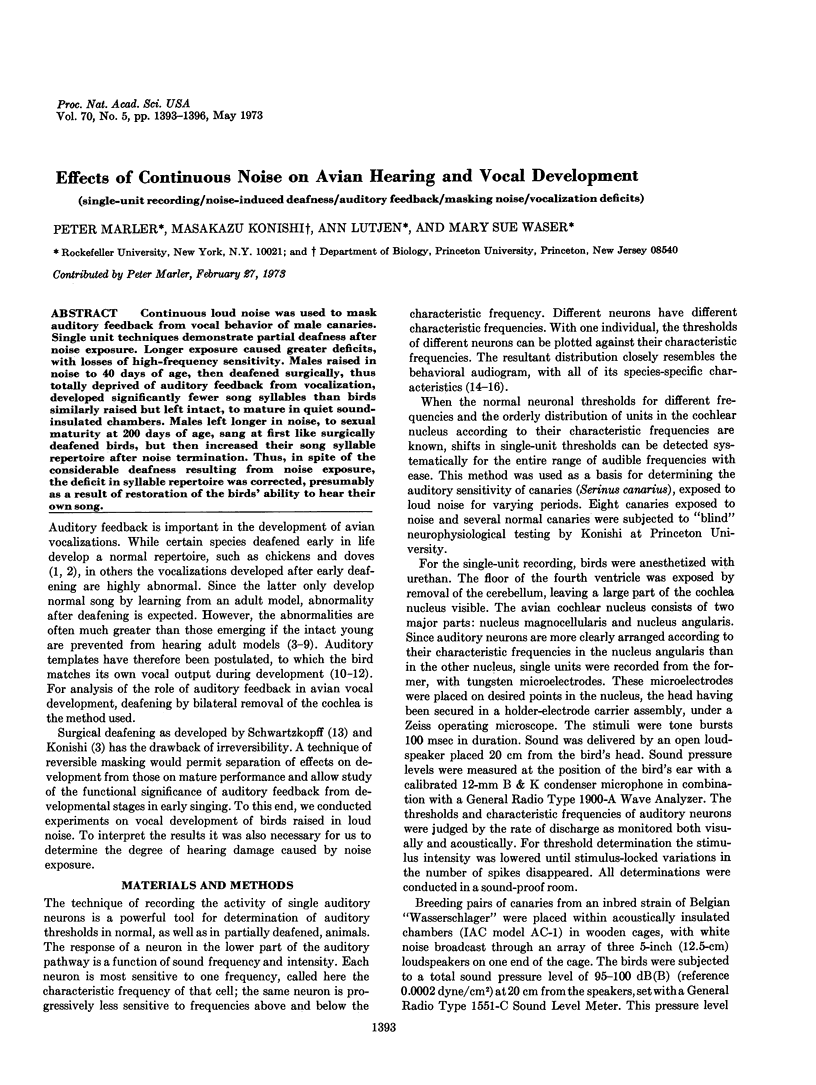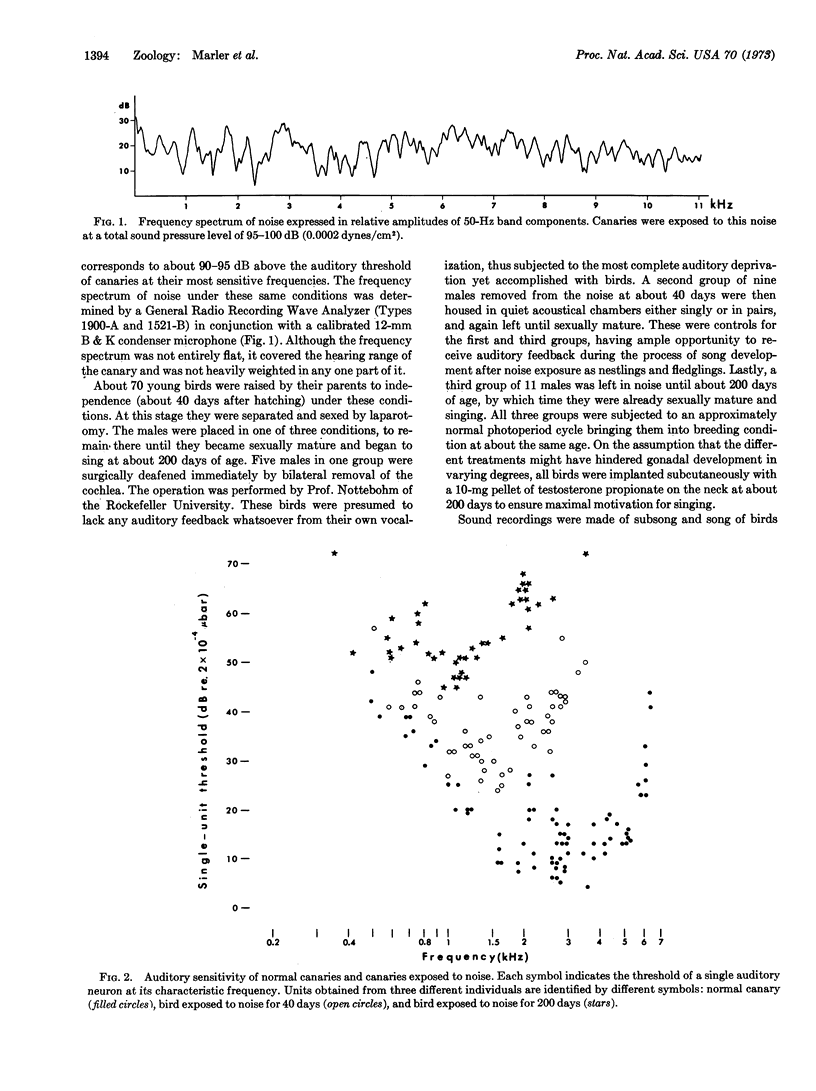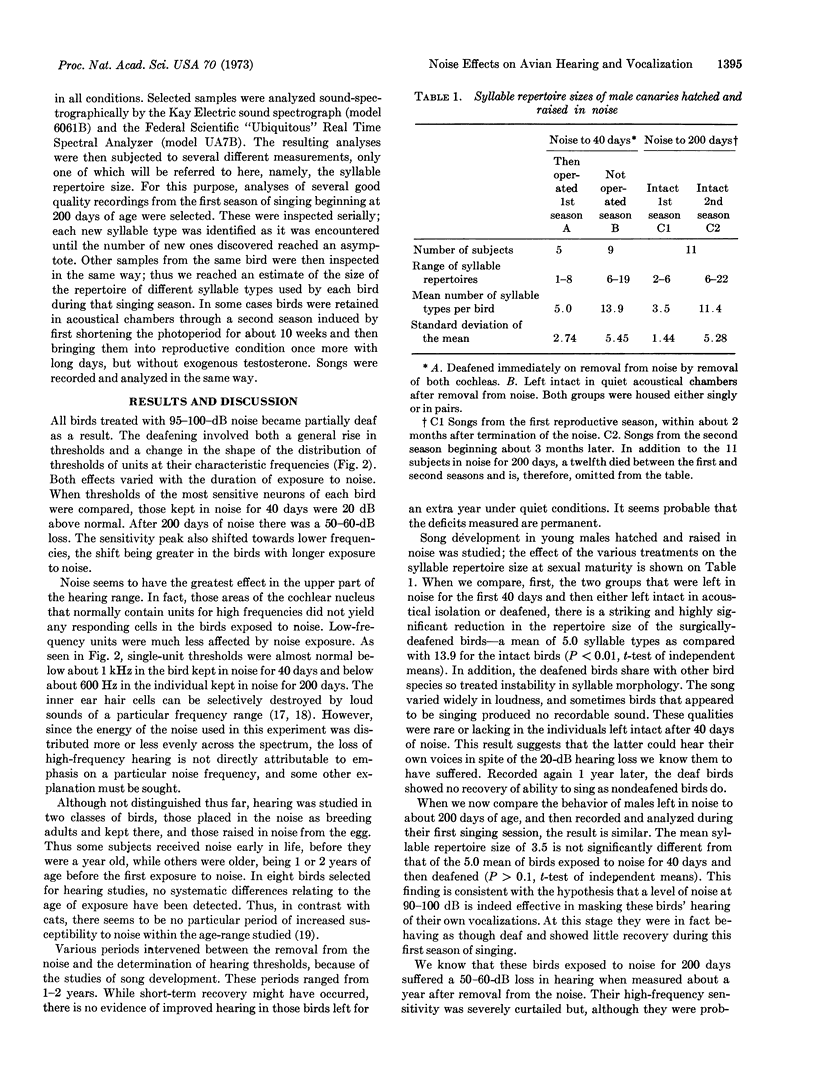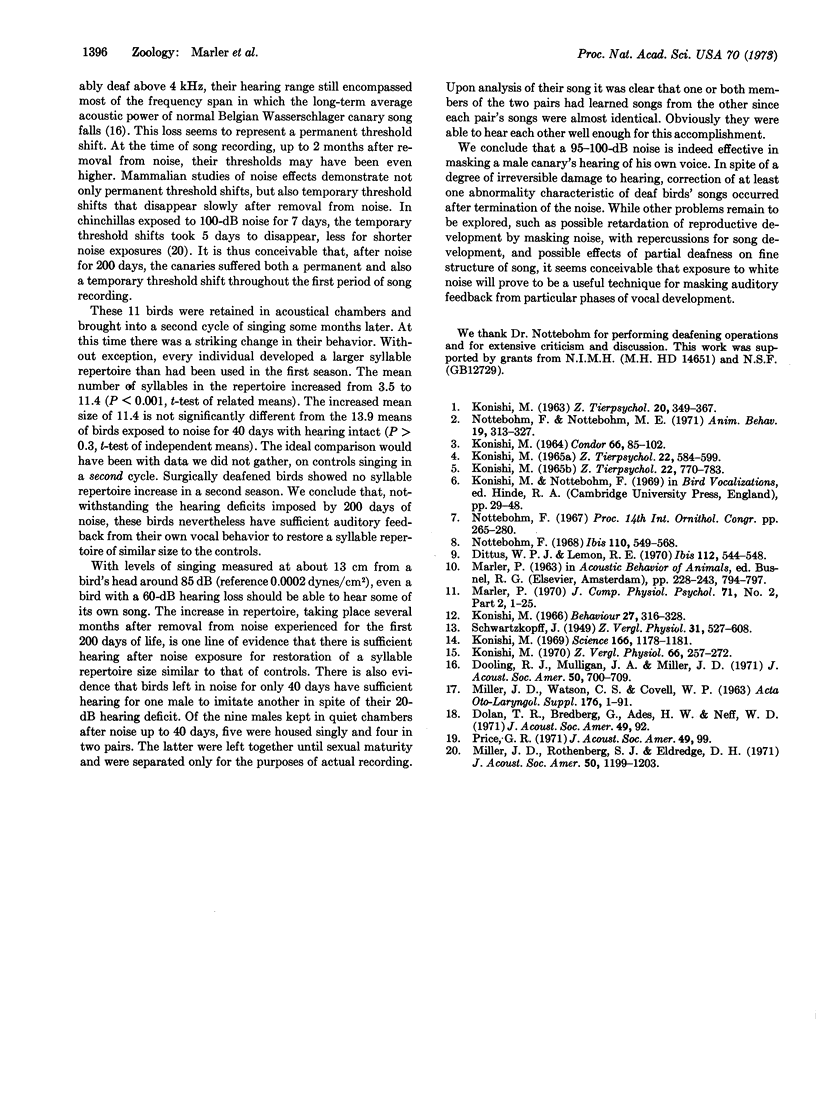Abstract
Continuous loud noice was used to mask auditory feedback from vocal behavior of male canaries. Single unit techniques demonstrate partial deafness after noise exposure. Longer exposure caused greater deficits, with losses of high-frequency sensitivity. Males raised in noise to 40 days of age, then deafened surgically, thus totally deprived of auditory feedback from vocalization, developed significantly fewer song syllables than birds similarly raised but left intact, to mature in quiet sound-insulated chambers. Males left longer in noise, to sexual maturity at 200 days of age, sang at first like surgically deafend birds, but then increased their song syllable repertoire after noise termination. Thus, in spite of the considerable deafness resulting from noise exposure, the deficit in syllable repertoire was corrected, presumably as a result of restoration of the birds' ability to hear their own song.
Keywords: single-unit recording, noise-induced deafness, auditory feedback, masking noise, vocalization deficits
Full text
PDF



Selected References
These references are in PubMed. This may not be the complete list of references from this article.
- Dooling R. J., Mulligan J. A., Miller J. D. Auditory sensitivity and song spectrum of the common canary (Serinus canarius). J Acoust Soc Am. 1971 Aug;50(2):700–709. doi: 10.1121/1.1912686. [DOI] [PubMed] [Google Scholar]
- Konishi M. Effects of deafening on song development in American robins and black-headed grosbeaks. Z Tierpsychol. 1965 Aug;22(5):584–599. [PubMed] [Google Scholar]
- Konishi M. Hearing, single-unit analysis, and vocalizations in songbirds. Science. 1969 Nov 28;166(3909):1178–1181. doi: 10.1126/science.166.3909.1178. [DOI] [PubMed] [Google Scholar]
- Konishi M. The attributes of instinct. Behaviour. 1966;27(3):316–328. doi: 10.1163/156853966x00209. [DOI] [PubMed] [Google Scholar]
- Konishi M. The role of auditory feedback in the control of vocalization in the white-crowned sparrow. Z Tierpsychol. 1965 Dec;22(7):770–783. [PubMed] [Google Scholar]
- Nottebohm F., Nottebohm M. E. Vocalizations and breeding behaviour of surgically deafened ring doves (Streptopelia risoria). Anim Behav. 1971 May;19(2):313–327. doi: 10.1016/s0003-3472(71)80012-x. [DOI] [PubMed] [Google Scholar]


